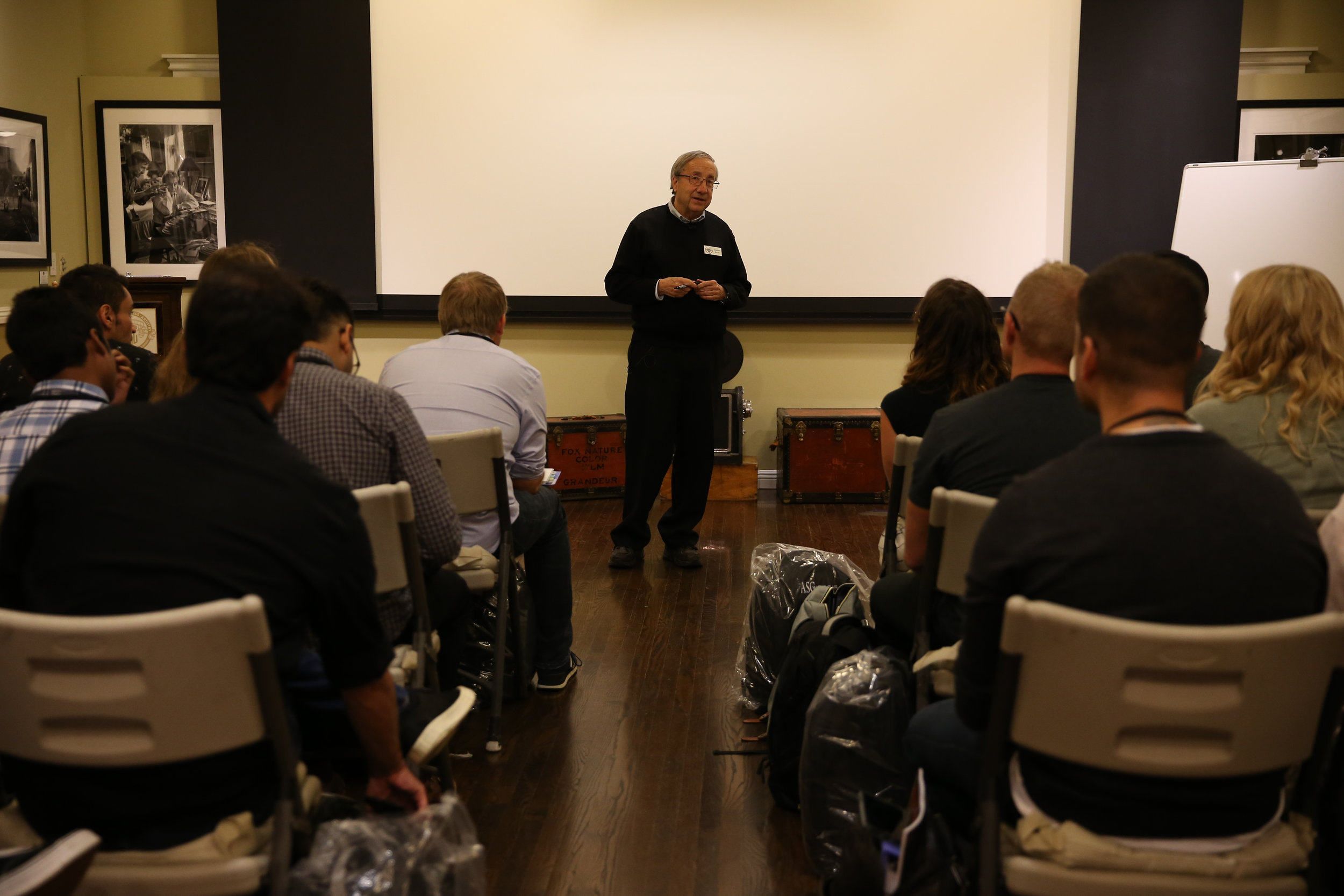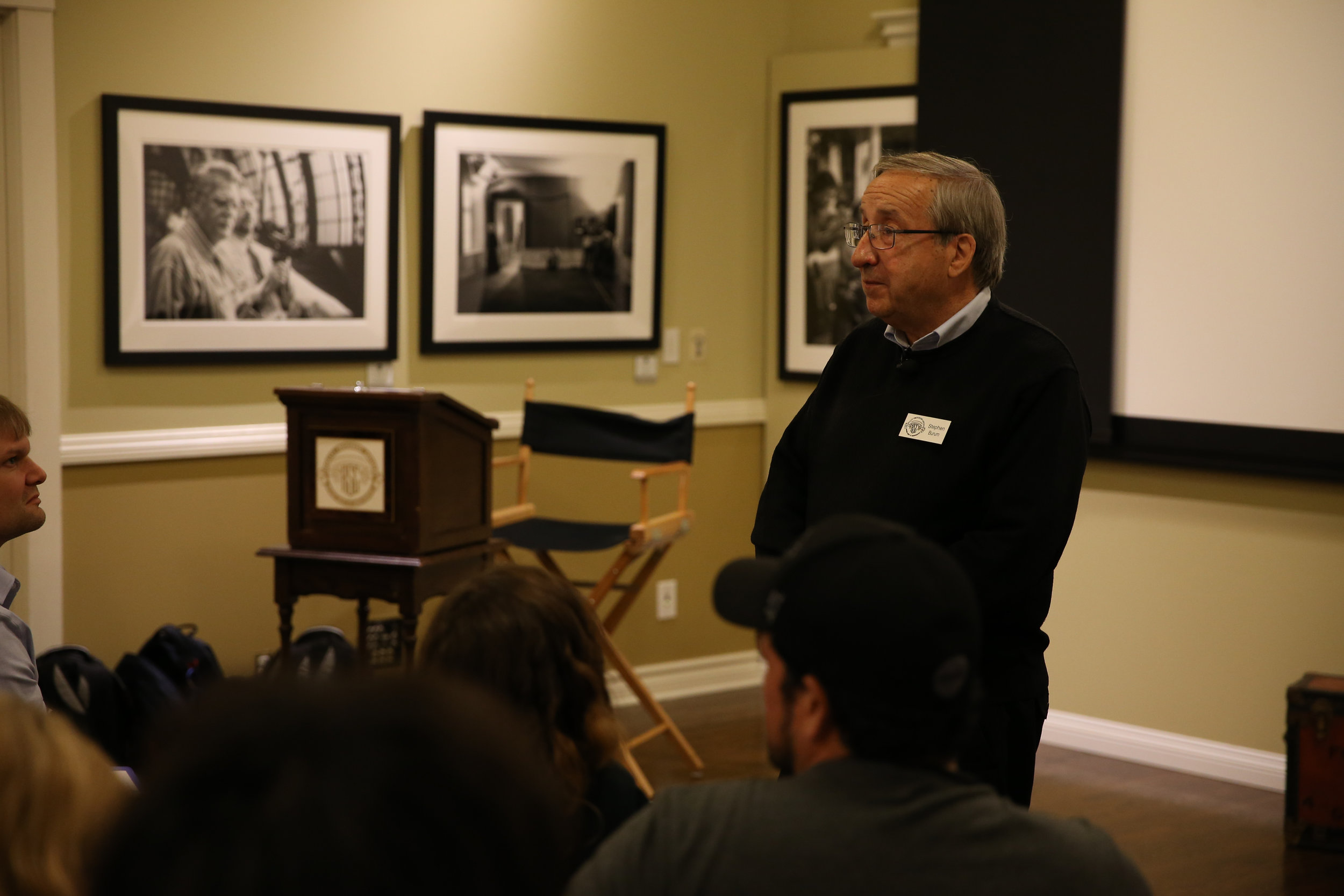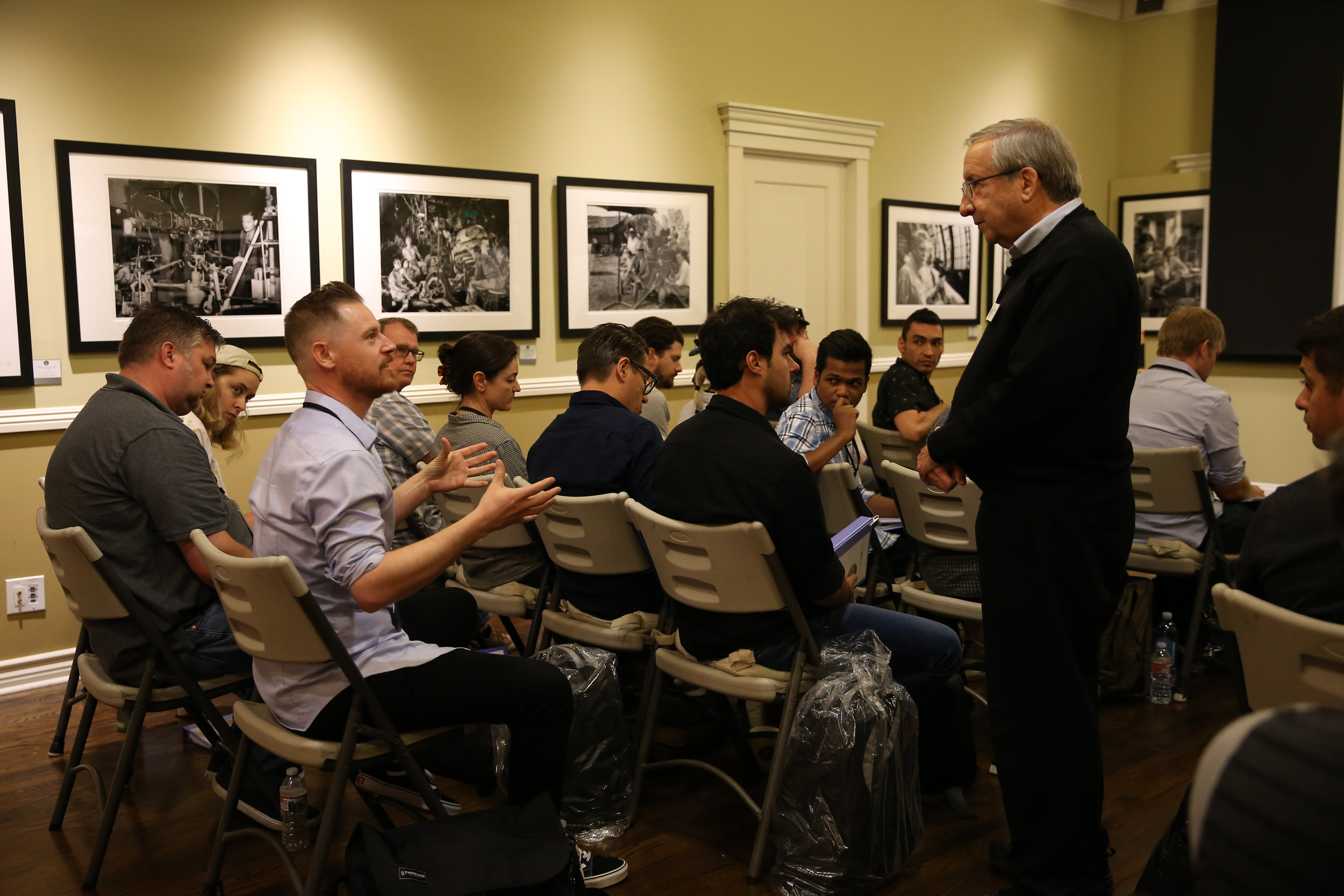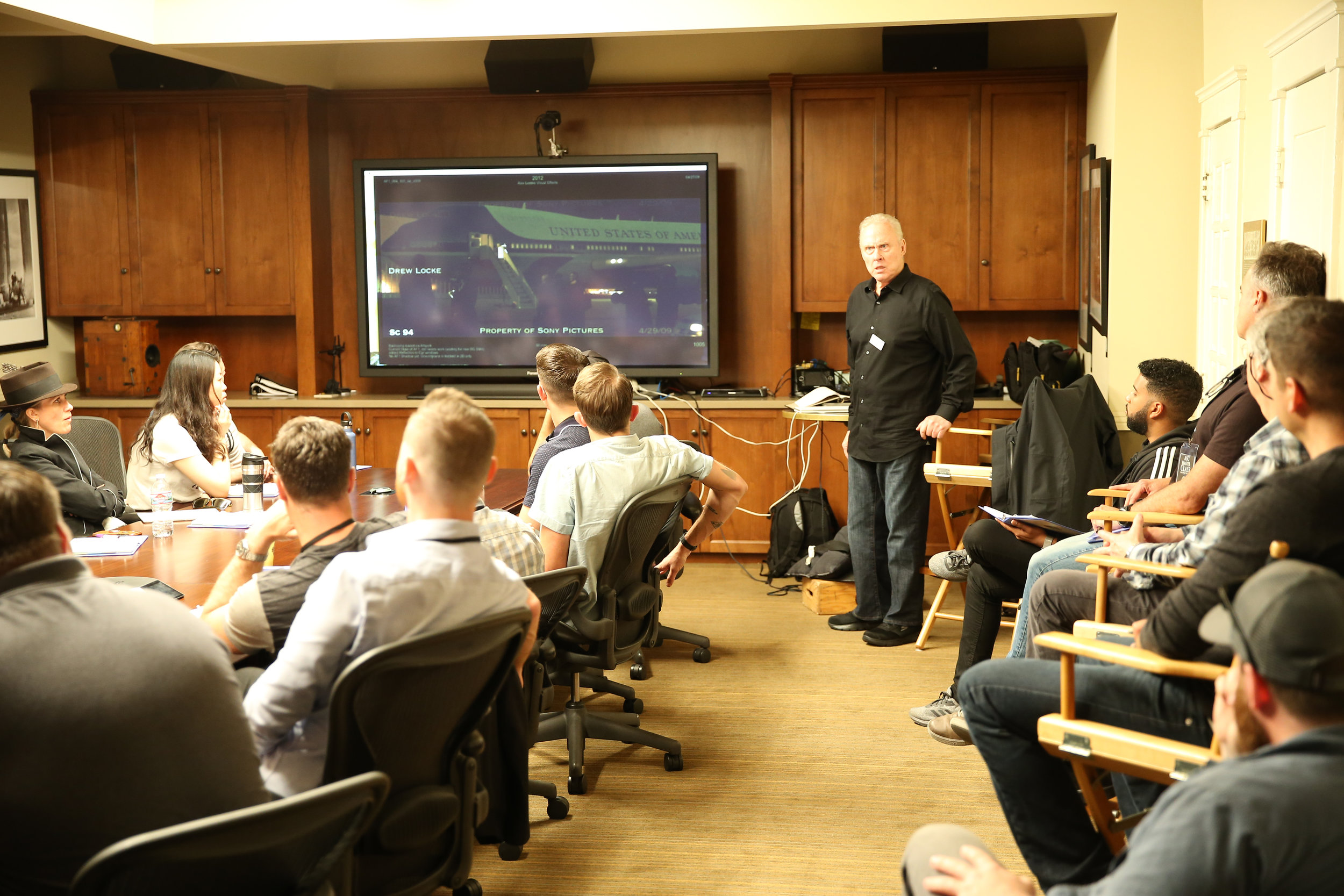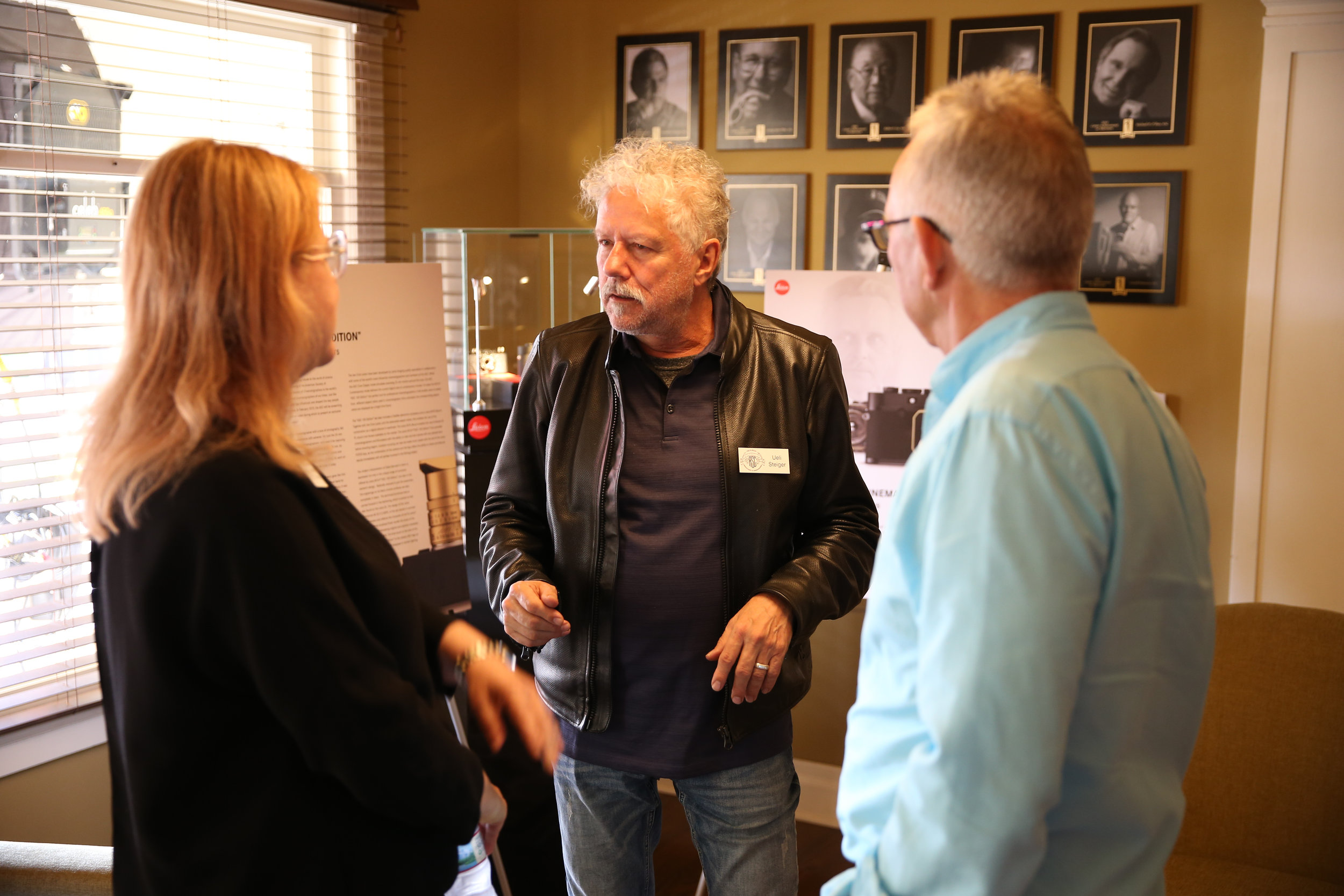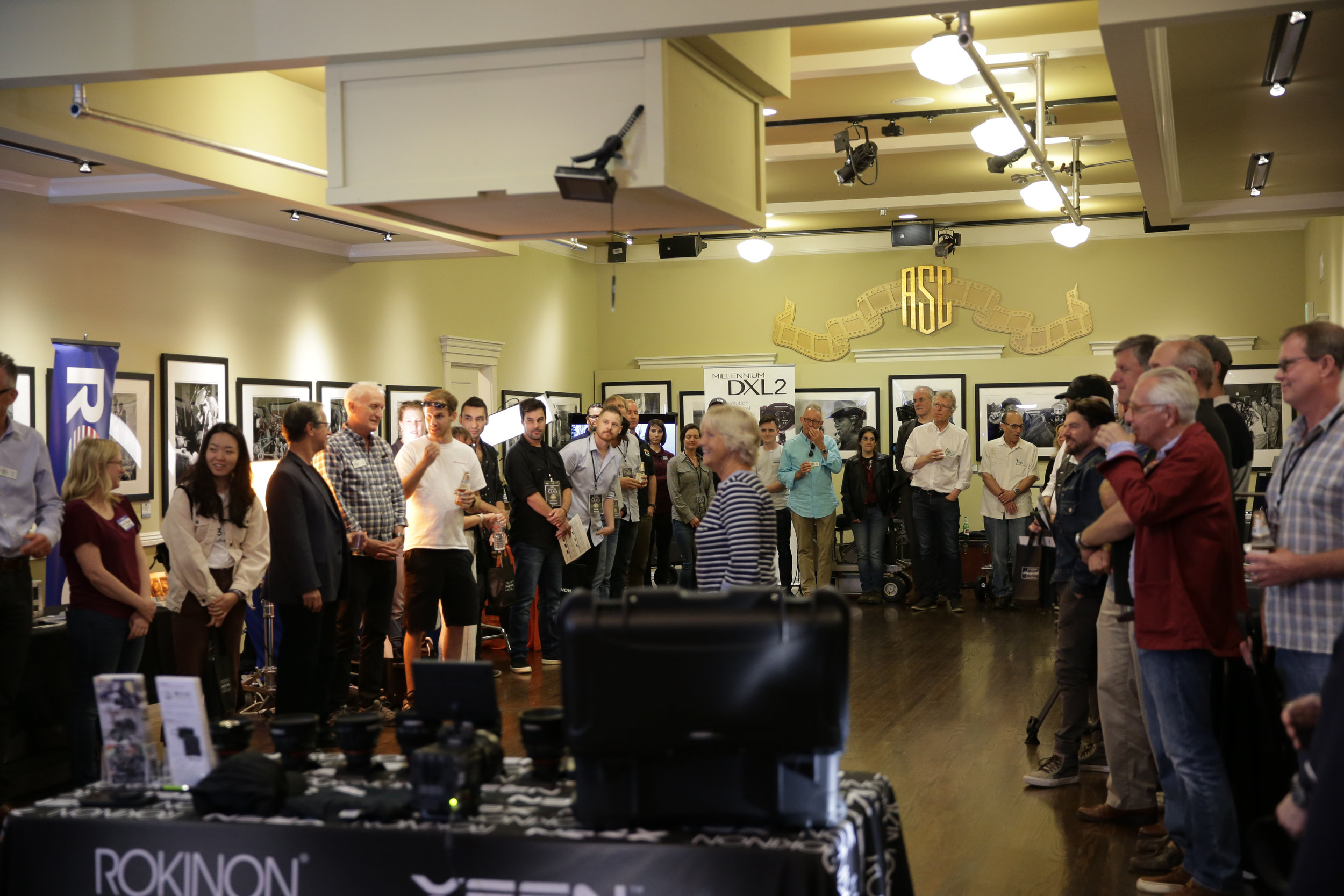THE ASC (AMERICAN SOCIETY OF CINEMATOGRAPHERS)
One of the most challenging parts of being a filmmaker, and a cinematographer in particular, is that we have a tendency to not share information with one another. So when the opportunity came up to spend a week at the ASC I leapt at the chance. The ASC is dedicated to passing on knowledge and skills, and gives you the opportunity to pick the brains of some of the best cinematographers in the world.
“The American Society of Cinematographers was founded in Hollywood in 1919 with the dual purpose of advancing the art and science of cinematography and bringing cinematographers together to exchange ideas, discuss techniques and promote the motion picture as an art form—a mission that continues today.”
The ASC clubhouse is located just behind Hollywood Boulevard and is an amazing building. Inside is a homage to the studio era of Hollywood, with old Panavision 35mm cameras, and black and white framed photos of legendary cinematographers at work.
The ASC Clubhouse in Hollywood at night. Photo by Isidore Mankofsky, ASC.
https://theasc.com/asc/asc-clubhouse
DAY 1 MORNING: STEPHEN H. BURUM, ASC
I arrived for breakfast at 7:30am on Monday morning and met the students that I would be spending the week with. I wasn’t the only one that had travelled a long way, the students came from all four corners of the world and from all walks of life.
Our first speaker of the day was the amazing Stephen H. Burum, ASC, cinematographer on Rumble Fish, The Untouchables, Carlito’s Way, Hoffa, Mission Impossible, and my personal favourite, St Elmo’s Fire. Stephen came up through the studio system and has an astonishing body of work and knowledge to go with it. He walked us through a few of his scenes as well as scenes from Hollywood classics to get us thinking about how we cast shadows, what type of shadows (hard or soft), and how we fill them and manipulate them to separate planes within the frame. He mentioned that we should try not to focus too much on the mechanics and think more about the ‘why?’ If the character’s ugly shoot them ugly, or progress the lighting from ugly to flattering as the character changes.
I didn’t realise at the time but Stephen and a number of other great cinematographers would be there with us for the entire week and I was able to ask him questions as they popped up. He knows all the tricks, such as seamless iris pulls on the move or how to frame with actors moving in all directions. (His advice by the way was to lock the left side of frame and the headroom, and not to worry too much if other actors drifted in and out of the frame.)
The question I would end up asking every cinematographer that we met was how do they deal with shooting dialogue scenes outside in natural light over the course of a full day or multiple days. Shooting in Australia under a harsh sun makes it really difficult to match shots as the sun moves over head and becomes ‘toppy’ and ugly. Everyone had the same answer: with great difficulty, but the key is lots of planning; keep the sun behind each character throughout the day and try to shoot close-ups with a scrim through the middle of the day when the sun is high overhead. It’s amazing how many questions you already know the answer to but you’re just looking for reassurance from those that know to tell you that you’re on the right track.
DAY 1 AFTERNOON: DON McCUAIG, ASC
After a great lunch we met up with Don McCuaig, ASC to learn about shooting second unit in Hollywood. Don has had an amazing career shooting second unit on some of the biggest films in the world. A lot of second unit involves pre-vis, heavy CGI and trying to match seamlessly to scenes that have already been shot by the main unit. Second unit also gets to shoot a lot of the big stunts and action scenes, which are often the most exciting work on the film. Working second unit in the studio system seems an absolute world away from what I’m doing (small independent films and video clips in Australia) but it’s an interesting peek through the shutters at what possibly lies beyond.
DAY 1 EVENING: SPONSORS
While we were with Don McCuaig, ASC, the staff at the clubhouse had been busy turning the main room into a mini expo. Representatives from Panavision, Arri, Schneider, Zeiss, Red, Panasonic, Kino Flo and many others had set up displays and gear for us.
It was a great opportunity for me to catch up with Christopher D'Anna from Schneider because I needed a bunch of filters. He was able to organise a couple of Rhodium ND filters to fill in the gaps in my collection and a set of Hollywood Blackmagic, my favourite diffusion filters. He also organised a tour of their new Burbank facility as well.
DAY 1: SOCIAL DINNER
While the mini expo was happening inside, the ASC crew were setting up tables and chairs outside preparing a huge meal. We had a wonderful dinner that night with all the sponsors and a number of ASC cinematographers who came to meet the students. I had a chance to meet another Australian, Peter Moss, ACS ASC, who is an amazing cinematographer living in LA. Mossy embodies the ideas behind both the ACS (Australian Cinematographers Society) and ASC, and is happy to encourage and share knowledge with the next generation. It’s so easy to get caught up in the competitive nature of getting jobs, funding and even awards that we feel like we can’t ask questions or pass on the techniques that we learn along the way. It was so refreshing to just spend a day learning and sharing.
I went home exhausted that night to my Airbnb in West Hollywood and set my alarm for 6:00am. That was just Day 1, there were still four more days to go.
Nicholas Price
DOP | Cinematographer
nicholaspricedp.com
AUSCREW
P. (02) 9427 4444
E. auscrew@auscrew.com.au
Nicholas Price is a Sydney based DOP | Producer who has made commercials, video clips, TV, documentary and short films. Nick is a Masters graduate of AFTRS and is always striving to bring a unique visual style to any project he works on. He recently shot the award winning web series After Nightfall and feature film According to Otto.
